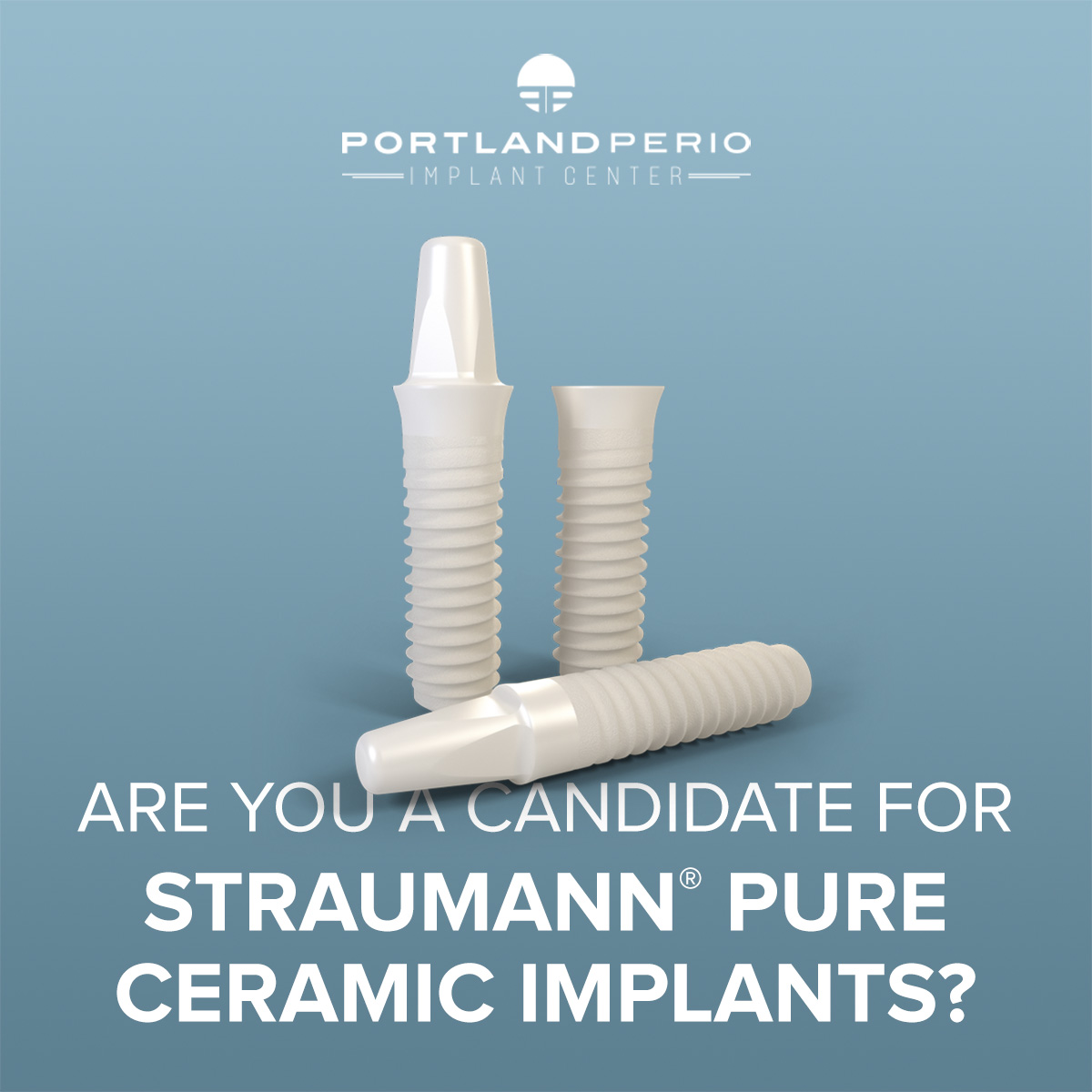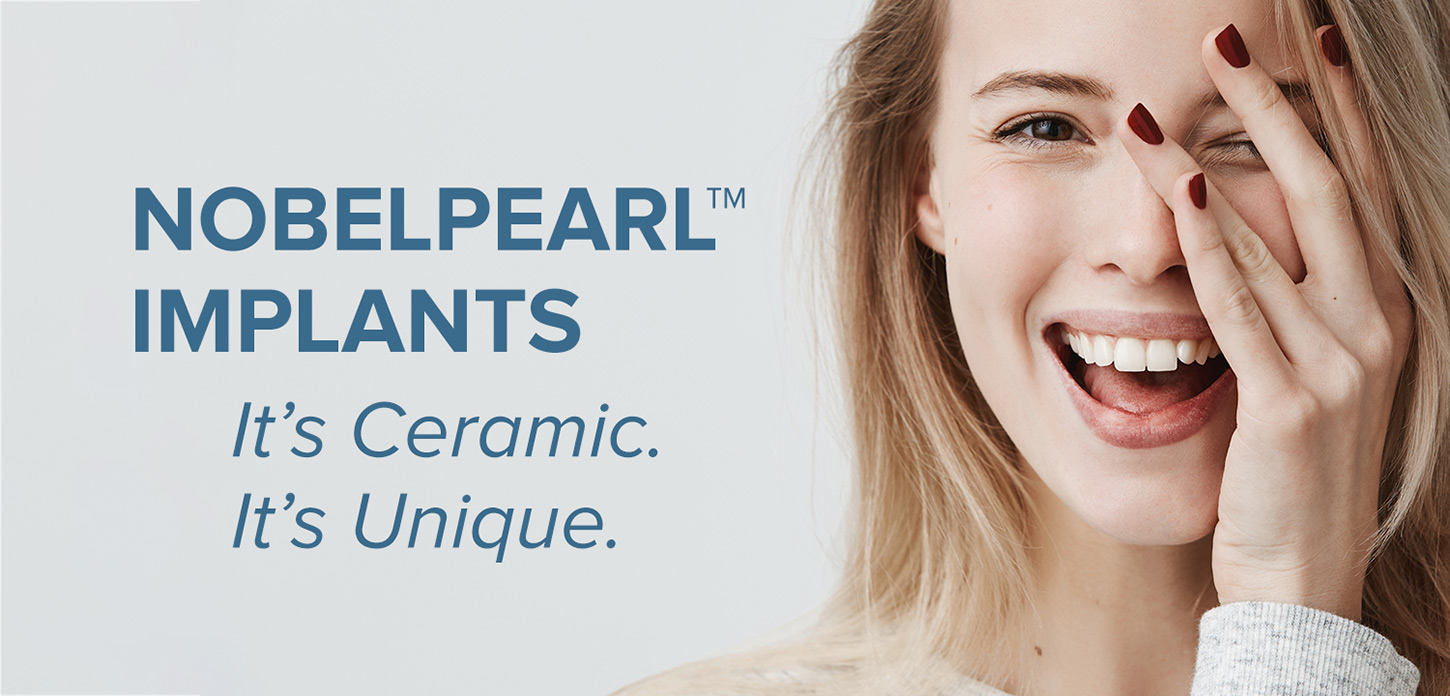When dental implant therapy has been determined to be the best solution for your missing teeth, determining what type of implant to choose will be the next step in treatment. Zirconia and titanium are the two most commonly used and readily accessible materials for dental implants. Making an informed decision as to which type of implant is best for your specific case is determined by the individual case parameters and the characteristics of the implant.
"Identify your goals for the dental implant procedure before deciding on the implant type. When determining whether ceramic or titanium is right for you, consulting with a knowledgeable and experienced implant expert is essential."
DR. KAMRAN HAGHIGHAT, B.D.S., M.S., P.C.
Diplomate, American Board of Periodontology
Diplomate, American Board of Oral Implantology
Benefits of Dental Implants
Dental implants have several benefits, which have quickly become one of the most popular tooth restoration methods. They include:
Enhancing your speaking ability
The ability to eat a variety of foods
Similar in function and appearance to natural teeth
It's comfortable, doesn't slip, and doesn't require adhesives
Designed to last a long time
With such excellent benefits, implants are a great treatment option when you are missing one or more teeth.
Case Study: From A Dental Disaster To A Winning Smile
Elisa was seeking treatment for her failing and painful mini implants. Previously, she was treated after seeing an advertisement for mini dental implants that promised everything you could want: "...painless, quick, minimally invasive, excellent esthetics and function at much lower cost...."
Fast forward 5 years and her mouth paints a very different picture. Read More >>>

What dental implant options are available?
The materials that make up dental implants can either be metal (titanium) or ceramic (zirconia). Both materials are dental-grade, inert, safe, and high-quality. Both materials have been proven to provide natural osseointegration between the implant and underlying bone. In most cases, these materials offer excellent options and can be used for many case types. However, some attributes of these materials may make one more appealing for an individual case than the other.
Characteristics of Titanium Dental Implants
Titanium implants have been used to restore missing teeth since the 1960s. These implants offer years of clinical data revealing that they are an extremely effective option for tooth replacement. In fact, these implants have been shown to have a 97% success rate. Titanium implants have been shown to last for 20 years and longer with proper oral hygiene and care.
Other characteristics of this material include:
Extremely durable
Resistant to both lateral and compressive forces
Chemically inert
Acid-resistant
Allergic reactions are rare
Made from metal
Lower cost
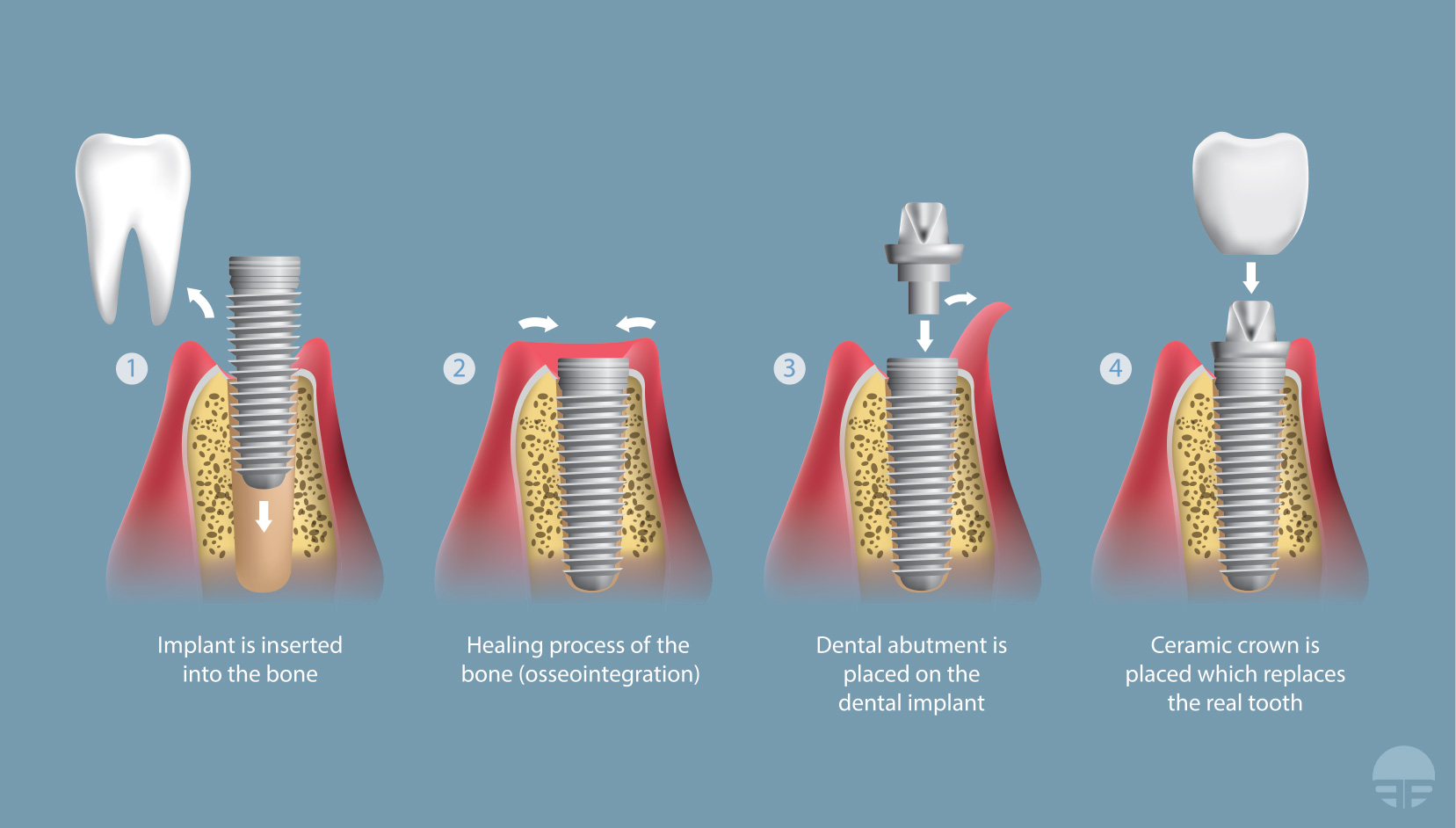
A titanium implant consists of three parts:
The fixture is embedded with the jaw and integrates into the bone (osseointegration), acting as the tooth root.
The abutment is placed into the fixture and serves as the tooth prep or as a support for the final restoration.
The crown acts as the visible tooth structure.
Case Study: A Picture is Worth A 1,000 Words
Ami came to us after years of struggling with dental health issues. It was evident that her confidence had declined over the years, and she was having trouble with most aspects of her life that we take for granted.
As her dentition was no longer salvageable, we recommended All On 4 dental implant therapy. In Ami's own words, find out more about her journey. Read More >>>
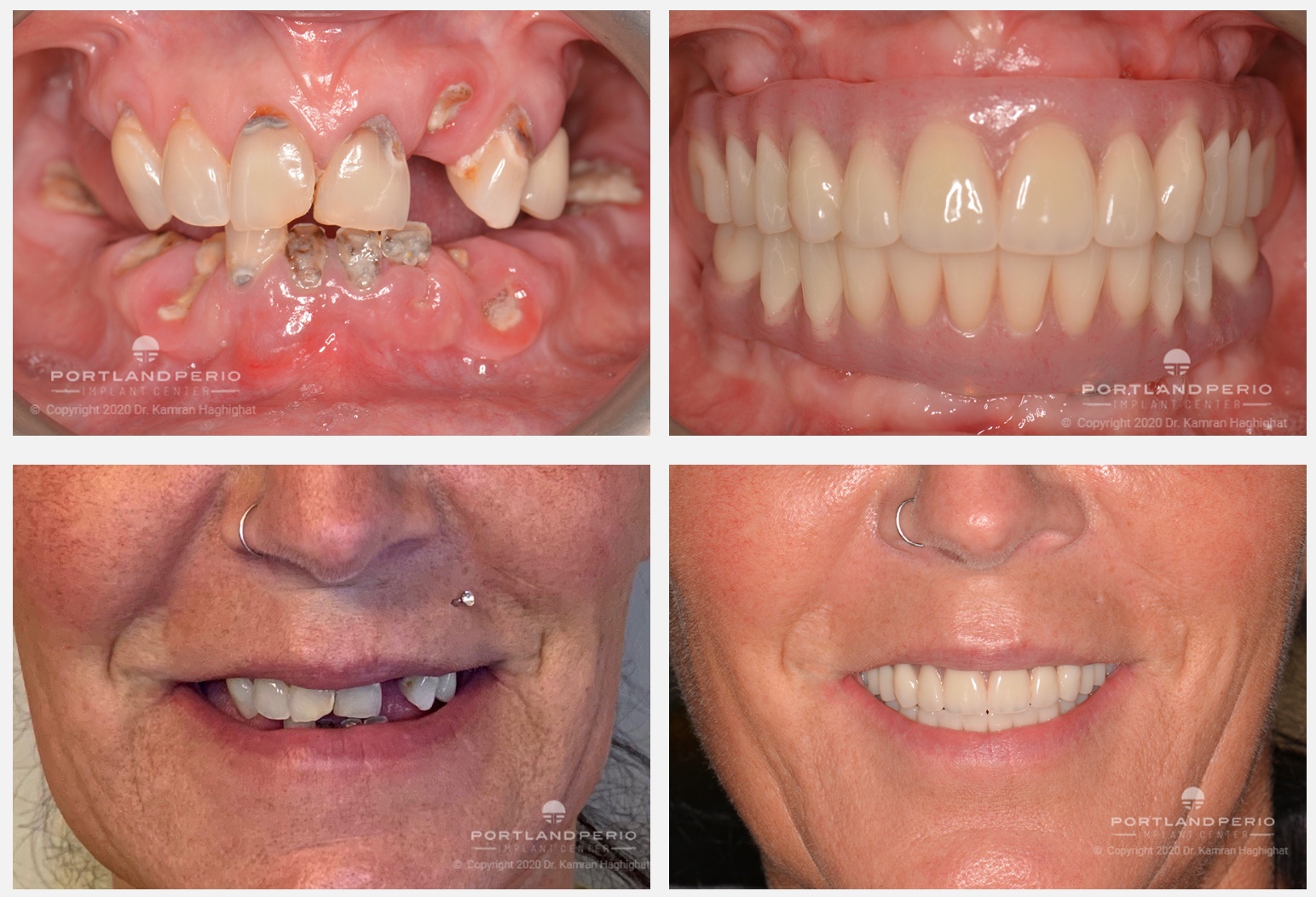
Benefits of Titanium Dental Implants
The key benefit of using a titanium dental implant is the clinical success of this type of implant over the last 60-plus years. These implants have been known to last from 20-30 years. This is primarily due to their ability to osseointegrate within the jawbone and because titanium implants are not likely to fracture.
Titanium implants are often suggested for the following types of cases:
Patients who exhibit bite issues such as a misaligned bite, excessive grinding, and other parafunctional activities.
Cases where space may be an issue. Small spaces require more narrow implants, which are typically not available in zirconia implants.
Full-mouth implant-supported rehabilitation. Titanium implants are currently recommended for these larger rehabilitation cases.
Titanium implants are a less expensive option than Zirconia Implants.
Case Study: Stained and Mismatched Teeth To A Beautiful Smile
Mike's case illustrates the monolithic zirconium All On Four prosthesis. It is a very strong material that is stained by a ceramist to the desired shade. In contrast to conventional titanium and acrylic prosthetics, these are metal-free.
Following extensive discussion of the pros and cons of both options during the temporization phase of his treatment, Mike chose Zirconia prosthesis. This is Mike’s journey. Read More >>>
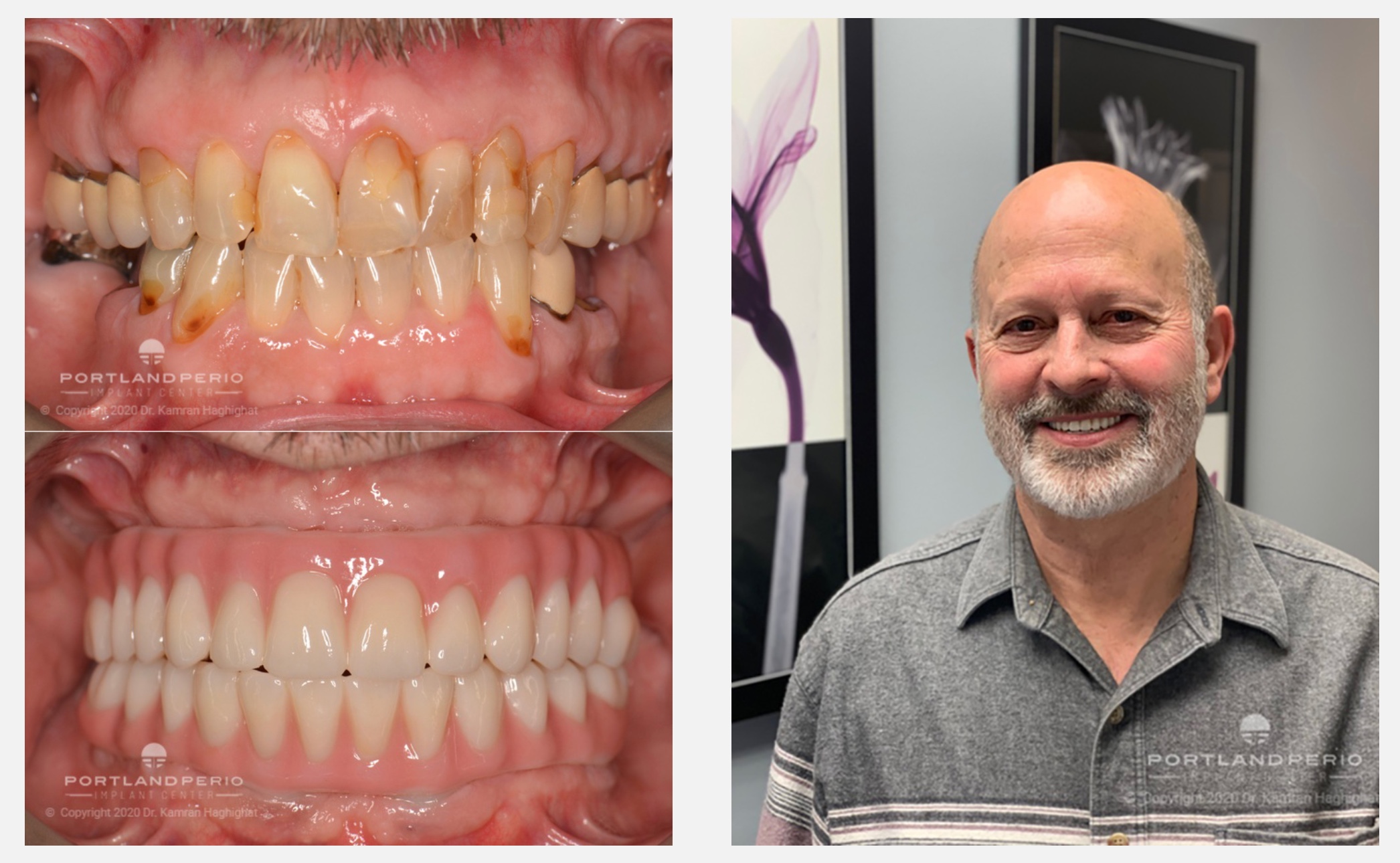
Characteristics of Ceramic Implants
Ceramic Implants like zirconia have been used in dentistry since the early 2000s. It was not cleared for use in dental implants by the FDA until 2011. They are a naturally white ceramic material. These implants offer less clinical research than titanium dental implants. They have, however, been a successful option for many implant cases.
Other characteristics of this material include:
Extremely durable
Resistant to both lateral and compressive forces
Chemically inert
Acid-resistant
Non-allergenic
White coloration
Highly aesthetic
One-piece design
Premium price
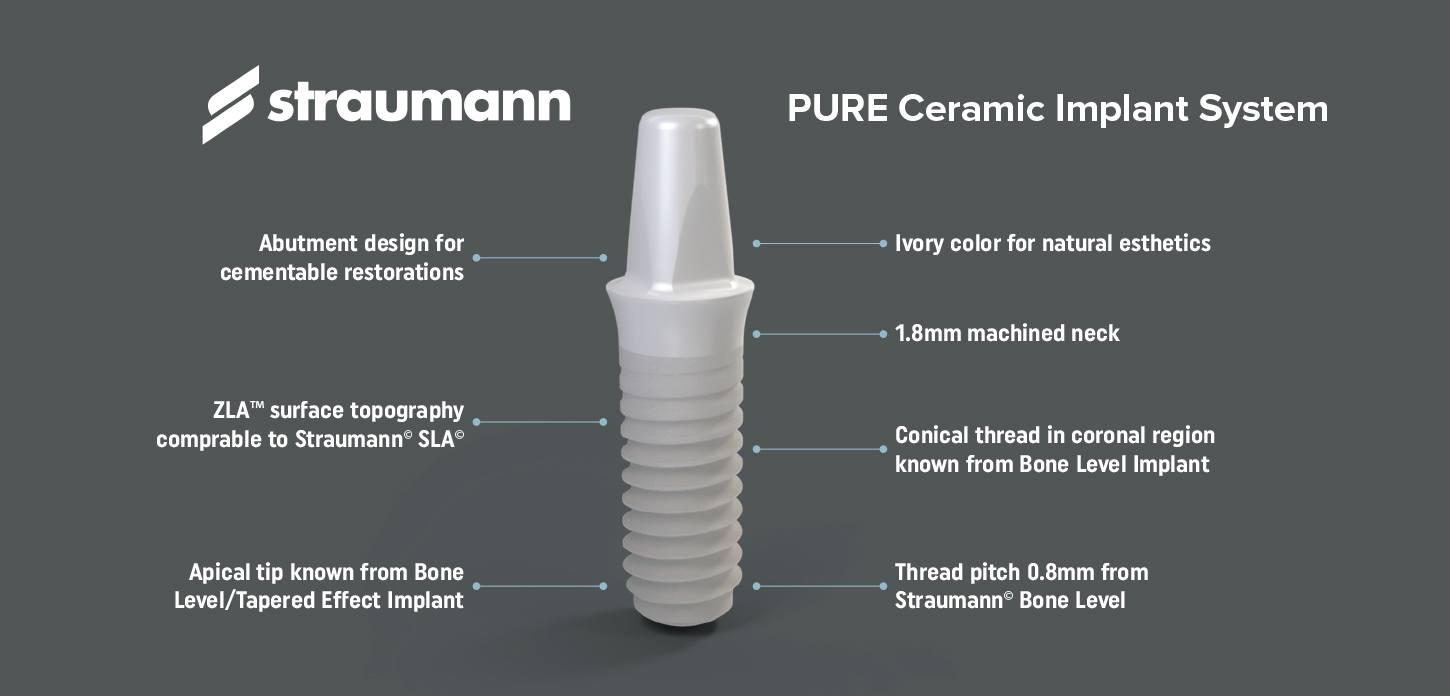
There are two types of ceramic implants.
The first type is a one-piece design that consists of the following:
The fixture is embedded with the jaw and integrates into the bone (osseointegration), acting as the tooth root. It also is visible above the gums as it is all in one piece.
The crown acts as the visible tooth structure.
The second type is a two-piece design that consists of the following:
The zirconia fixture is embedded with the jaw and integrates into the bone (osseointegration), acting as the tooth root.
The zirconia abutment is placed into the fixture and serves as the tooth prep or as a support for the final restoration.
The crown acts as the visible tooth structure.
Benefits of Ceramic Implants
Ceramic implants like zirconia are a newer development in implant therapies compared to titanium abutments. They, however, offer many benefits and have recognized clinical successes making them a highly prescribed implant option.
Ceramic Implants are often prescribed in the following circumstances:
Patients who take a holistic approach to their dental care primarily do not want metal used in their dental care.
Patients who have presented with an allergy to titanium (very rare) can not use titanium and must go with a ceramic implant.
Patients with thinner gums may want to utilize a ceramic implant to avoid the potential of the metal showing through if a titanium implant is used. Titanium abutments used in esthetic areas with thin tissue will result in a visible graying of the gum area. Ceramic implants are white and do not show through the gums this way.
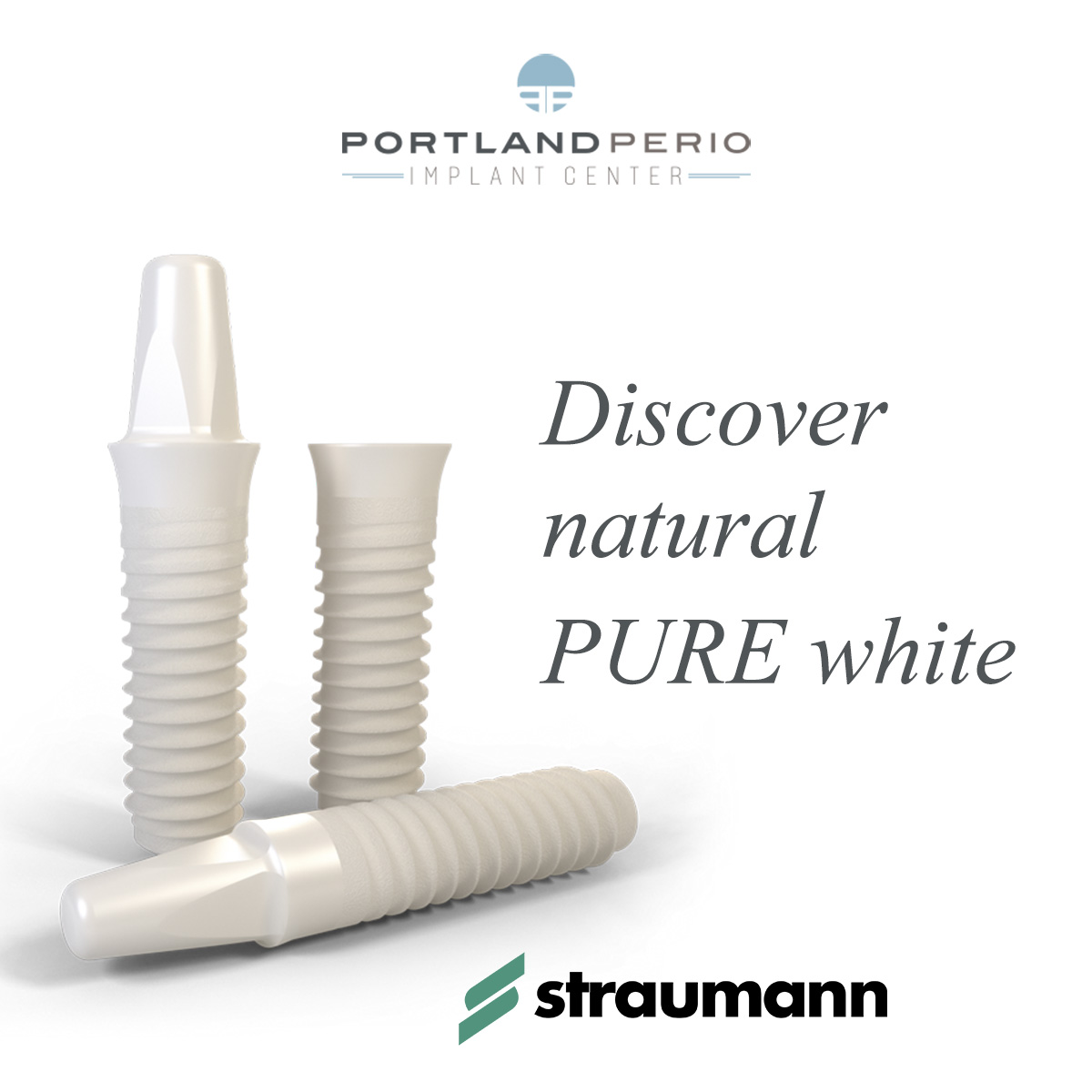
There are similar success rates with ceramic implants and titanium implants. Nevertheless, which implant material is best for a specific case can only be determined after considering your individual needs.
Identify your goals for the dental implant procedure before deciding on the implant type.
When determining whether ceramic or titanium is right for you, consulting with a knowledgeable and experienced implant expert is essential.







